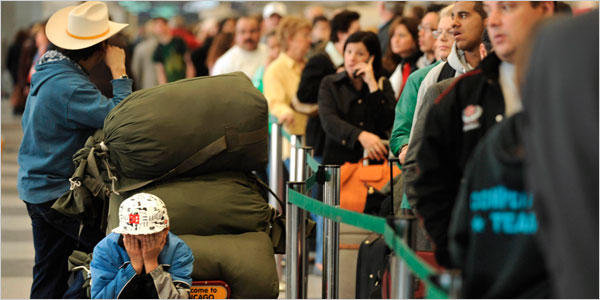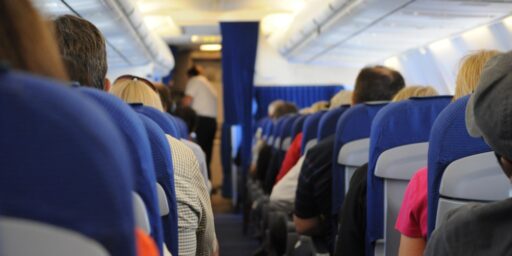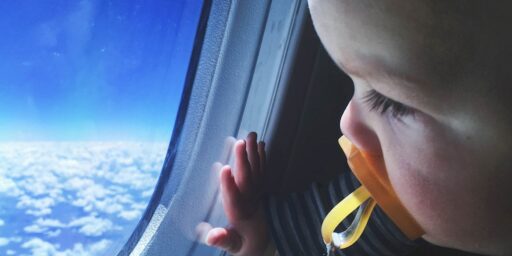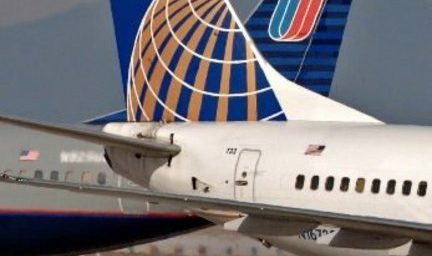Airline Market Shake-Out II
The other shoe has dropped: American, Northwest, Continental Match Delta’s Lower Air Fares (Bloomberg)
American Airlines and four other U.S. carriers matched Delta Air Lines Inc.’s lower prices on some flights and dropped other restrictions, an Internet travel monitor said. American, the world’s largest carrier, matched Delta, including on 80 percent of flights from Dallas-Fort Worth, said Tom Parsons, chief executive of BestFares.com, an Internet travel information Web site. Northwest Airlines Corp., United Airlines and Continental Airlines Inc. matched on routes served by Atlanta- based Delta, he said. US Airways Group Inc. said it cut fares on some flights. “It’s a super major overhaul to the system,” Parsons said in an interview today. “Over the next 48 hours and over the weekend, the dust should clear and we’ll have a more crystal clear idea of exactly what the bottom line is.”
Delta, the third-biggest U.S. carrier, cut U.S. fares as much as 50 percent, set maximum prices on coach and first-class tickets and eliminated requirements such as a Saturday-night sat to win back customers from low-fare competitors. Carriers such as Southwest Airlines Co. and JetBlue Airways Inc. are adding flights in cities where larger carriers pulled out to help stem annual losses that began in 2001. “There are broad changes we are instituting and we’ll have more to say,” American spokesman Al Becker said today. American, a unit of AMR Corp., has been developing a new ticket pricing system. An attempt to adopt four types of fares and lower prices failed in 1992 when other airlines adopted deeper cuts.
Delta’s top fares are $499 one way for economy seats and $599 one way in first class. It cut the number of fares available on a flight to six from as many as 20. The variety of fares, based on demand and the timing of purchase, results in wide disparities in prices paid by customers sitting next to each other on a flight.
Airline stocks fell yesterday on concern that revenue may drop if carriers match Delta. Merrill Lynch analyst Michael Linenberg said airlines may lose as much as $3 billion a year and cut forecasts on Delta, AMR, Northwest and AirTran Holdings Inc.
It’s amazing to me that these carriers manage to stay in business despite such incredible mismanagement. How one can lose billions of dollars providing transportation services is mindboggling. The only variable cost that I’m away of is fuel prices, the margin of fluctuation of which would have to be a relatively small part of the total cost of providing air service.
If we can stop the government bailouts and constant bankruptcy protection, the market will solve this one relatively quickly.






“Delta’s top fares are $499 one way for economy seats and $599 one way in first class. It cut the number of fares available on a flight to six from as many as 20. The variety of fares, based on demand and the timing of purchase, results in wide disparities in prices paid by customers sitting next to each other on a flight.”
Very interesting !!!!
A lot of the mismanagement was a simple case of knuckling under to every union demand every time, no matter how uncompetitive or absurd. Knowing that your customers are going straight to your competitor for a service they need RIGHT NOW if your people go on strike makes prudent management of personnel costs very difficult.
And no, I don’t know what the answer to that is…
I suppose one could headquarter the airlines only in Right to Work states. That probably wouldn’t help much with baggage handlers and whatnot who work at local airports, though.
Yes, fuel is the ONLY variable, but what flexibility does the airlines have to unilaterally raise prices to cover fuel costs? Southwest was sitting on tons of cash and therefore was able to buy into fuel at lower prices on the futures market to lock in the lower rate. The big airlines couldn’t do that since they pissed away their cash after 9/11, so they had to pay for the gas at market prices. So Southwest had a huge competitive advantage and the big airlines just couldn’t afford to raise fares.
http://www.bizjournals.com/phoenix/stories/2004/05/10/daily38.html
Southwest fuel strategy paying dividends
“Kelly told conference attendees that Southwest has tapped into the futures market to save hundreds of millions of dollars in fuel costs.”
Not exactly chump change.
This post, to me, displays a shocking ignorance of economics. The fundamental problem the airlines have is that the marginal cost of flying someone from point A to point B is far, far less than the average cost of flying them (since airlines have large fixed costs like planes, gate leases and the like). If you’re at all familiar with “space available” travel you realize that, at the end of the day, the marginal cost of flying someone on a flight that is not sold out is very close to zero. The extreme disconnect between marginal cost and average cost means that airlines are pushed to price discrimination schemes so that they can simultaneously: (a) maximize the incremental profit (or minimize the incremental loss) of each flight by selling as many seats as possible (b) extract enough average revenue from the seats they sell to cover (or exceed) the average cost of flying the plane.
The problem is that since airlines compete their price discrimination schemes are unstable. And they have only gotten more so now that Internet travel sites make it easier to compare fares, change routings to avoid high-cost itineraries and the like. So far, the only airline model that has proven it can make money over the long (i.e. decades) run is that of the “flag carrier” where a captive audience of travelers (in the home market) make an airline’s price discrimination schemes more stable (and even plenty of flag carriers run into trouble – see Air Canada and Swissair, for example). I’m not saying airline deregulation hasn’t been wonderful for the US air travel consumer, but I am saying that without additional pricing power (which seems hard to achieve given all of the planes out there) no one should expect US airlines to make money in the aggregate.
Ravi,
But the market would take care of this problem absent government bailouts. No rational investor would start up a new airline in today’s environment and many of the current carriers would go out of business. Those who survive would be in a position to charge what’s necessary. The problem now is that the carriers try to sell seats at a loss to underprice their competitors, presumably trying to make it up on volume.
But you’re looking at only half the cycle. I’ll admit no rational investor wants to start an airline today (though the guys behind Independence Air [November 2003] seem not all that rational). But look a few moves ahead… Suppose a bunch of airlines go out of business. The remaining ones expand service on the profitable routes of the departed airlines, but overall capacity contracts, prices go up and airlines start turning a profit again. What happens next?
Well there’s some bean-counter over at GE Capital who’s thinking about all these planes they have just sitting out in the desert (remember, capacity contracted and Boeing and Airbus haven’t stopped building planes). And he’s thinking that wouldn’t it be nice if these planes were bringing in some money rather than no money. But the existing, profitable airlines don’t want to expand capacity. On the other hand, there’s this upstart guy who thinks that if he just “cherry picks” a few profitable routes and some underserved markets he might be able pull together a small network that turns a profit. And if he could lease a few planes cheaply, his business plan looks that much better. And so the incumbent airlines start cutting prices to compete. And the cycle starts all over again…
The issue isn’t that no one wants to start an airline today. The issue is that the economic reality implied by high fixed costs, low marginal costs and low barriers to entry means that the next time the airlines start making money someone will want to start an airline (see: JetBlue 1999) or a small airline will want to expand service (see: Southwest in the 90s). It shouldn’t surprise anyone that the airline industry is not stable.